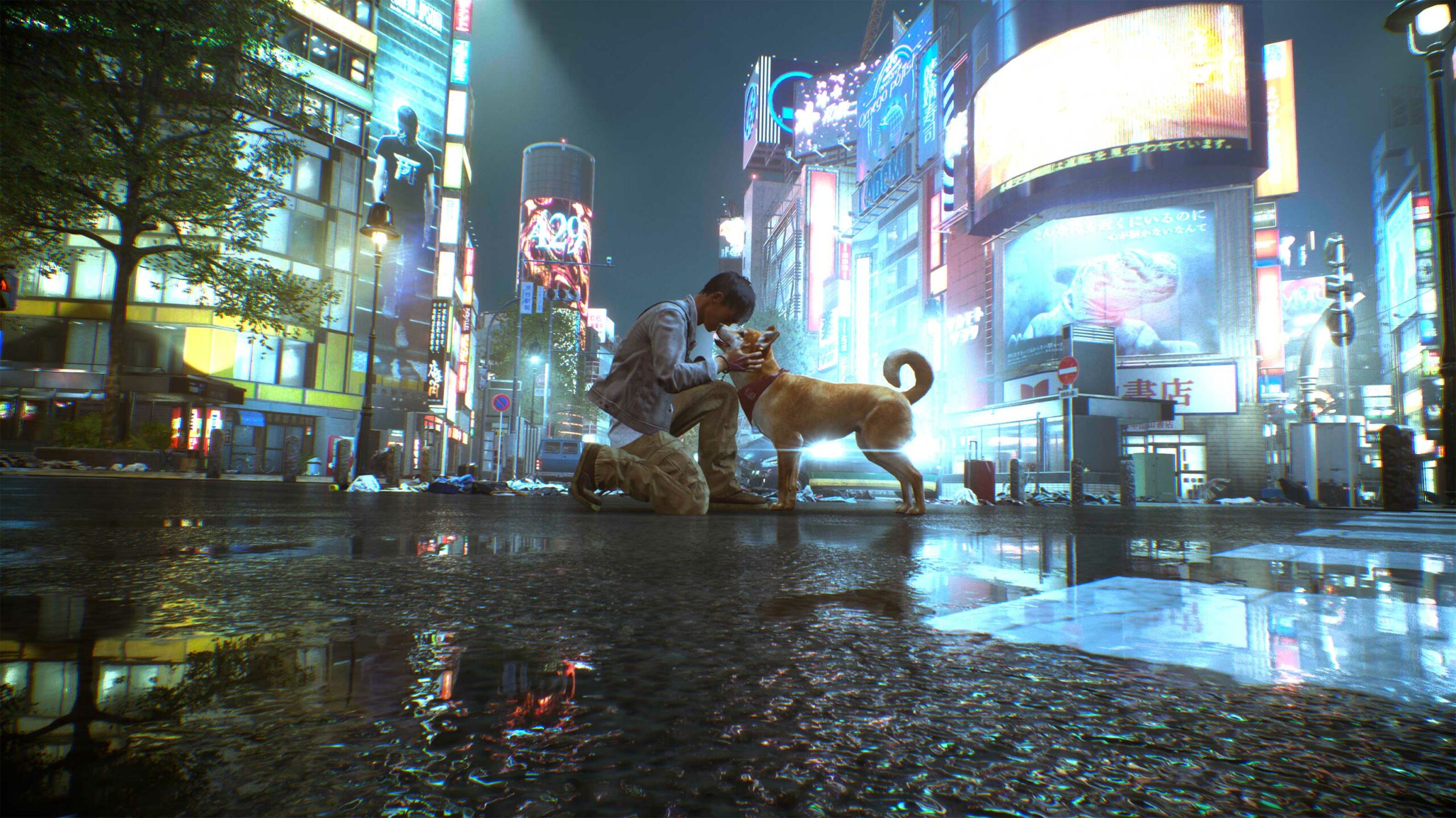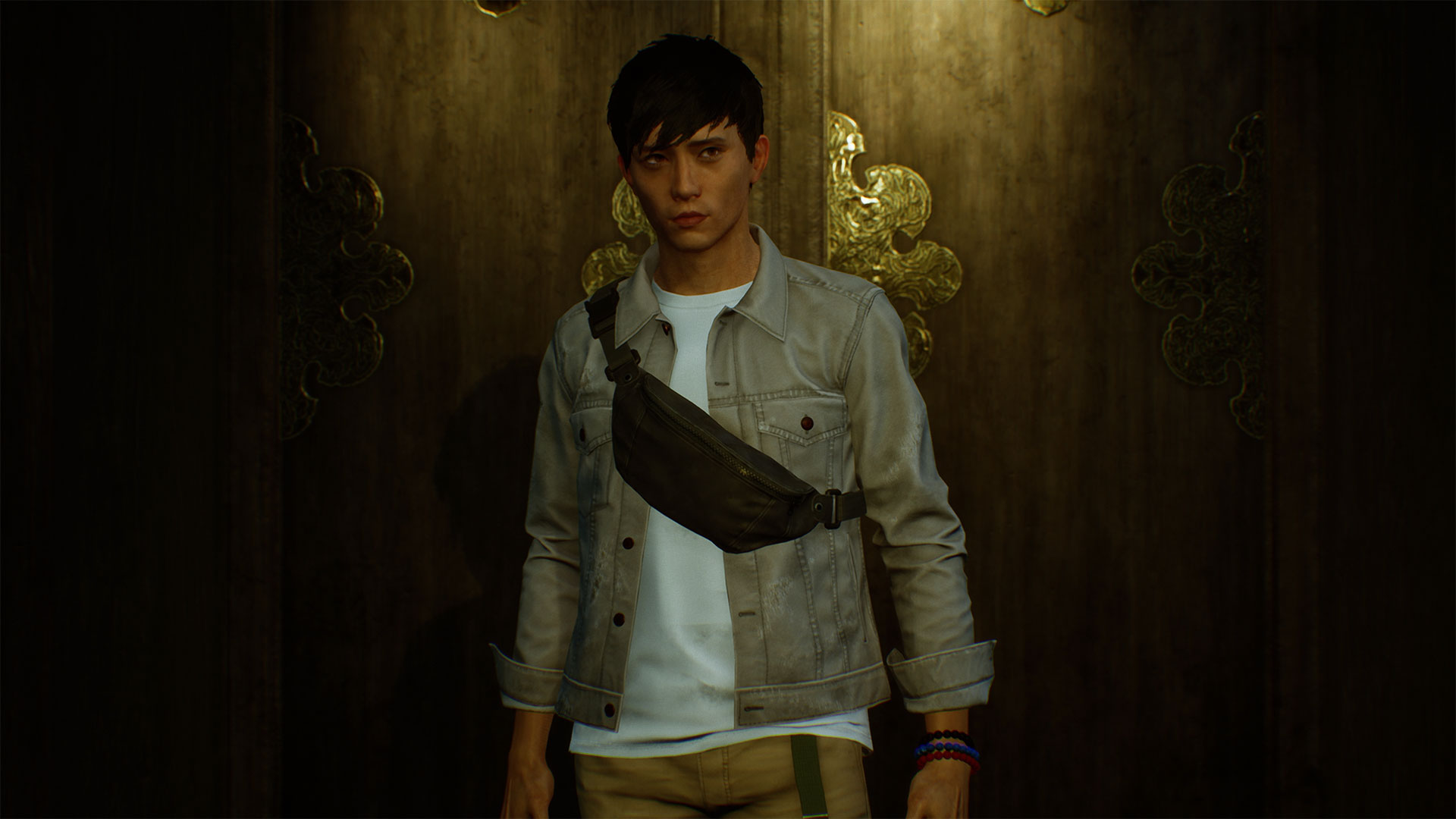
As I walk through the hauntingly empty and rain-soaked streets of modern Tokyo, which juxtapose nicely with the catchy jingles in the nearest convenience store, I find myself deeply engrossed in Ghostwire: Tokyo. Developer Tango Gameworks, which is based in Tokyo, has clearly recreated its city with loving reverence.
But it’s a feeling of immersion that doesn’t last. All too often, Ghostwire falls back on dated world design philosophies and repetitive combat. That’s a shame, because there’s quite a lot of potential here, and it’s only somewhat realized by the time the credits roll.
Monotonous magic
All of that is even more disappointing because Ghostwire has an exceptionally intriguing start. One day, the bustling streets of Tokyo are suddenly overrun by paranormal entities known as ‘Visitors,’ reducing the iconic city’s population by a staggering 99 percent. As this happens, a young man named Akito becomes possessed by a spirit detective named ‘KK,’ and together, the two must investigate the strange Visitor threat and save Akito’s sister, Mari. While some of these elements might seem spooky, this is not at all a horror game like Tango’s last two The Evil Within titles.
If anything, Ghostwire first comes off as a wickedly cool power fantasy. Thanks to KK, Akito — who you control in first-person — is granted some ethereal magic powers. These are called Weavings and they’re animated with such lively flair that they quickly become delightfully reminiscent of Aang’s bending skills from Avatar The Last Airbender or Dr. Strange’s spells from the Marvel films. Considering that most first-person action games involve guns, it’s commendable that Tango has taken such a novel, otherwordly approach. The problem, however, is that you quickly see that Ghostwire‘s magic is the epitome of style over substance.

Within the game’s first two hours, you acquire three spells — the single-shot, rapid-fire Wind Weaving, the explosive Fire Weaving and the wider-ranged Water Weaving — and these are the only three spells you’ll have for the 10-15 hour campaign. That wouldn’t be an issue in and of itself, except for the fact that the utility of the Weavings never really changes, and the types of enemies — as appreciably creepy as they can be — aren’t that varied. While the fairly basic XP-based progression system lets you improve the efficiency of these moves, their core “shoot ad nauseum” functionality remains frustratingly the same throughout. You do also have a bow and an instant-kill sneak attack, but the environments simply aren’t set up for stealth, so these don’t really prove to be meaningful additions to your arsenal.
What does somewhat elevate the dull combat is the finishers. Deal enough damage to an enemy and you expose its core, which you can latch onto with your “Ghostwire” to yank out. It’s in these moments where the PS5’s DualSense controller goes wild, delivering visceral vibrations as you pull harder. This, combined with the flashiness of your moves and conceptually unique take on first-person combat, made me lament the fact that fighting Visitors wasn’t anywhere near as fun as it looks.
Rewarding discovery… sometimes
Thankfully, Tango is overall fairly more successful with Ghostwire’s various other aspects, albeit with some key caveats. Interestingly, the game’s narrative has the inverse problem of the combat — it starts weak and picks up as you go along. Initially, Akito is a bland, personality-less hero who only talks about rescuing Mari, and because Ghostwire does nothing at first to develop Mari beyond a token damsel he must save, I found myself not caring at all about his quest. KK, at least, had a slightly more interesting backstory, which I enjoyed uncovering over time. And if nothing else, little bits of banter between Akito and KK, such as the former’s infatuation with dogs and the latter’s constant desire for a cigarette, help create an engaging, if superficial, core character dynamic.

Interestingly, though, Ghostwire becomes significantly more story-driven in the final few hours, bombarding you with flashbacks to Akito and Mari’s childhoods and a deepening of Akito and KK’s bond. On the one hand, these feel like “too little, too late,” but on the other, I appreciated the more methodical pacing for emotional moments. If more time was dedicated to fleshing out all of Ghostwire‘s narrative threads, especially its woefully underdeveloped villain, then more of an impact would have been had.
That said, Ghostwire‘s most well-realized character is named right in the title: Tokyo. Indeed, Ghostwire is at its best when you’re just roaming the stunningly detailed city and absorbing it all in. From towering neon skyscrapers and tranquil shrines to dense underground shopping areas and narrow alleyways, Tango’s fictionalized version of Tokyo feels meticulously crafted. You’ll eventually be able to zip up to buildings using winged creatures named Tengu, which hover in fixed locations and, when used in conjunction with your brief gliding ability, open up a nice degree of verticality to the city.
Some higher areas even require a bit of thought in how to ascend them; in one instance, I had to run through a little plaza to get close enough to jump onto a highway with an abandoned bus, which I could then jump off to reach a gondola to begin scaling my desired building.
Meanwhile, little collectibles that you can find, such as wayward souls speaking about their lives or discarded personal belongings, further help create the feeling that this was a city that was once lived in. Sidequests, too, are quite compelling. In addition to being satisfyingly short and sweet at around 20-30 minutes each, they’re also quite diverse in premise. In one instance, I chased a cackling demon through a multi-story complex to help out a grieving lover, while in another, I gave a moaning ghost some toilet paper. They’re by no means groundbreaking, but the way these quests vary in terms of tone, and the wells of fascinating Japanese folklore from which they draw, often made them more compelling than the main story.

If only Tango left you to your own devices during all of this; unfortunately, the developer has a frustrating tendency to stifle your exploration. The chief example of this is the way in which Ghostwire‘s world is structured. Each district of the map is covered in supernatural fog that you cannot pass, which can only be cleared by purifying sets of Torii Gates strewn about Tokyo. Not only is this an uninspired take on the trite “Ubisoft Towers,” but it’s one that frustratingly just makes you fight more waves enemies at each Gate.
Nowhere is this more egregious than in the late-game, in which you’re required to clear a set of one dozen consecutively to open up the final area. What’s more, you’re forced to watch after purifying Gates as the game automatically opens the map and adds markers for points of interest like sidequests, preventing you from naturally discovering these on your own even if you wanted to.
Given that Tango has created such a beautiful world containing surprisingly solid side content, it’s a shame that you weren’t given more freedom to explore. As mentioned before, Ghostwire is at its best when you’re just wandering the streets and picking up the last remnants of society. It’s an excellent sort of environmental storytelling in the vein of Gone Home or What Remains of Edith Finch, a rewarding and atmospheric way to allow you to piece things together yourself. But sadly, you can never fully do that when the game is constantly bombarding you with mandatory Torii Gates and resulting marker pop-ups.
A solid foundation
If I’ve sounded too harsh on Ghostwire, it’s mostly because I’m just disappointed with how Tango’s questionable design choices often do a disservice to its genuinely clever ones. Rarely have I seen such a unique and detailed open-world setting, nor have I come across sidequests that are well-paced and interwoven with rich and lovely folklore. Hopefully, Tango is able to make a sequel that can double down on all of that while providing a stronger narrative and deeper gameplay loop. For now, though, I wholly appreciate that the developer has taken a chance on a new IP, and it’s one that’s still worth playing, warts and all.
Ghostwire: Tokyo is now available on PlayStation 5 and PC to Deluxe Edition members, and will release for everyone on March 25th.
Image credit: Bethesda


